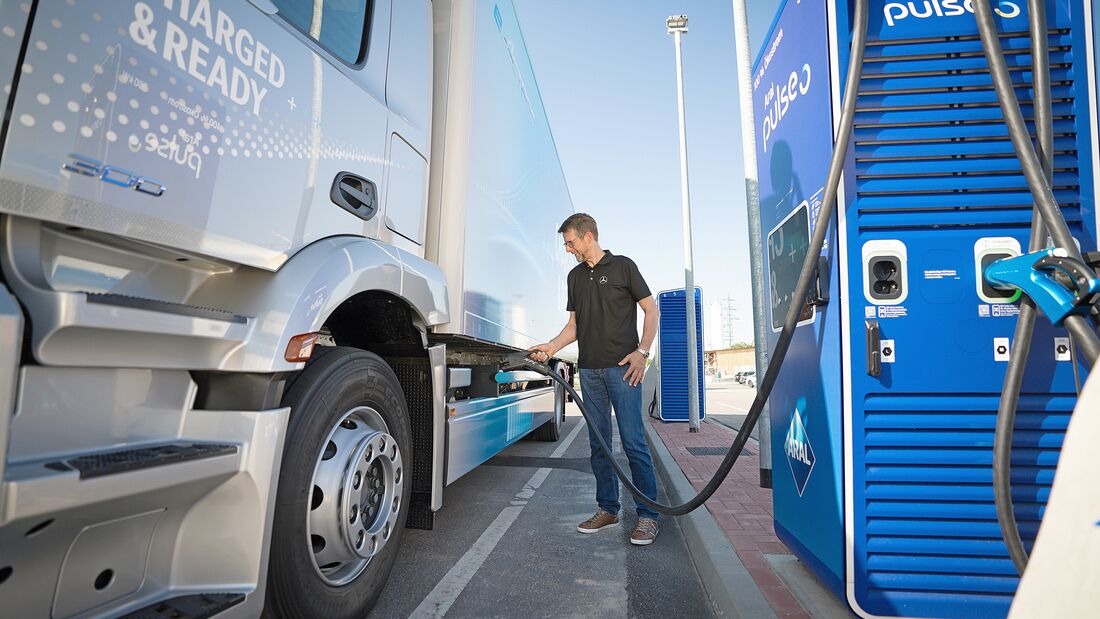The EU's climate targets have been set. Heavy trucks and coaches must reduce their greenhouse gas emissions by 45 percent between 2030 and the end of 2034, by 65 percent between 2035 and the end of 2039 and by 90 percent from 2040. City buses must even become completely emission-free vehicles by 2035 – and trailers and semi-trailers will also have to do their part in more environmentally friendly transportation from 2030.
The problem: while manufacturers are already offering battery-electric trucks for sale across the board, the expansion of the charging infrastructure is lagging behind. According to the European Automobile Manufacturers' Association (ACEA), more than 400,000 battery-electric and hydrogen-powered vehicles must be on the road and at least a third of all new registrations must be emission-free models in order to overcome the 45 percent hurdle. For the equation to work out, at least 50,000 publicly accessible charging stations suitable for heavy commercial vehicles and at least 700 hydrogen filling stations are needed across Europe.
"We are doing our part by investing in and ramping up production of battery-electric and hydrogen-powered models, but simply setting ambitious targets for manufacturers and hoping for smooth implementation is not a strategy," says Harald Seidel, Chairman of the ACEA Board for Commercial Vehicles and CEO of truck manufacturer DAF Trucks. The ambitious targets must be supported by equally ambitious framework conditions and a coherent legal framework.
1.700 MCS systems needed across Europe
The automotive consultancy Berylls has also presented an in-depth analysis that makes clear that electric trucks alone are not enough. According to the analysis, at least 1.700 MCS systems will be needed for sustainable long-distance transport in Europe – by 2030. In Germany, the main transit country, more than 300 charging points will be needed along the freeways, in France even more than 400. According to the analysis, the average charging location would have to have at least three charging points to cover the average charging demand. If demand rises sharply during peak times, an upper limit of 14 charging points would be justified if the waiting time per truck is not to exceed five minutes. This means that more than 10.000 charging units with a charging capacity of one megawatt would have to be installed by 2030. These XXL charging points would also have to be able to be booked in advance, unlike in the car sector, in order to meet the needs of logistics.
Nevertheless, at the beginning of July, Federal Ministers Dr. Volker Wissing and Dr. Robert Habeck gave the go-ahead for the new truck fast-charging network on the federal freeways. This includes 350 selected managed and unmanaged locations that are to be equipped with fast-charging infrastructure suitable for trucks. By 2030, the federal government expects more than 29.600 charging processes for e-trucks per day. By then, 354 public locations with 1.800 MCS charging points are planned for fast intermediate charging from one megawatt, for example during driving breaks. This is also to be supplemented by 2.400 CCS charging points by 2030 – some with 400 kW for intermediate charging and as a bridging technology until megawatt charging is possible across the board, but also with 100 kW for slow charging at night. Grid coverage should then be 94 percent and charging demand coverage two thirds. So it's a good start, but it now needs to be turned into reality.






